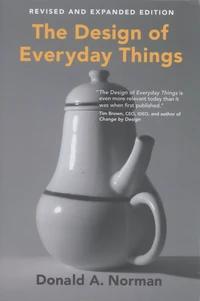Emotions are inseparable from how we humans think, choose, and act. In Emotional Design, cognitive scientist Don Norman shows how the principles of human psychology apply to the invention and design of new technologies and products. Norman is famous for the argument that good design demands that the user's needs must take precedence over a designer's aesthetic if anything-from light switches to airplanes-is going to work as the user requires.
In this book, he takes his thinking several steps further, showing that successful design must not just incorporate what users need, but must address our minds by attending to our visceral reactions, to our behavioral choices, and to the stories we want the things in our lives to tell others about ourselves. Good human-centered design isn't just about making effective tools that are straightforward to use ; it's about making affective tools that mesh well with our emotions, help us express our identities, and support our social lives.
From roller coasters to robots, and sports cars to smart phones, attractive things work better. Whether designer or consumer, user or inventor, this book is the definitive guide to making Norman's insights work for you.
Emotions are inseparable from how we humans think, choose, and act. In Emotional Design, cognitive scientist Don Norman shows how the principles of human psychology apply to the invention and design of new technologies and products. Norman is famous for the argument that good design demands that the user's needs must take precedence over a designer's aesthetic if anything-from light switches to airplanes-is going to work as the user requires.
In this book, he takes his thinking several steps further, showing that successful design must not just incorporate what users need, but must address our minds by attending to our visceral reactions, to our behavioral choices, and to the stories we want the things in our lives to tell others about ourselves. Good human-centered design isn't just about making effective tools that are straightforward to use ; it's about making affective tools that mesh well with our emotions, help us express our identities, and support our social lives.
From roller coasters to robots, and sports cars to smart phones, attractive things work better. Whether designer or consumer, user or inventor, this book is the definitive guide to making Norman's insights work for you.
